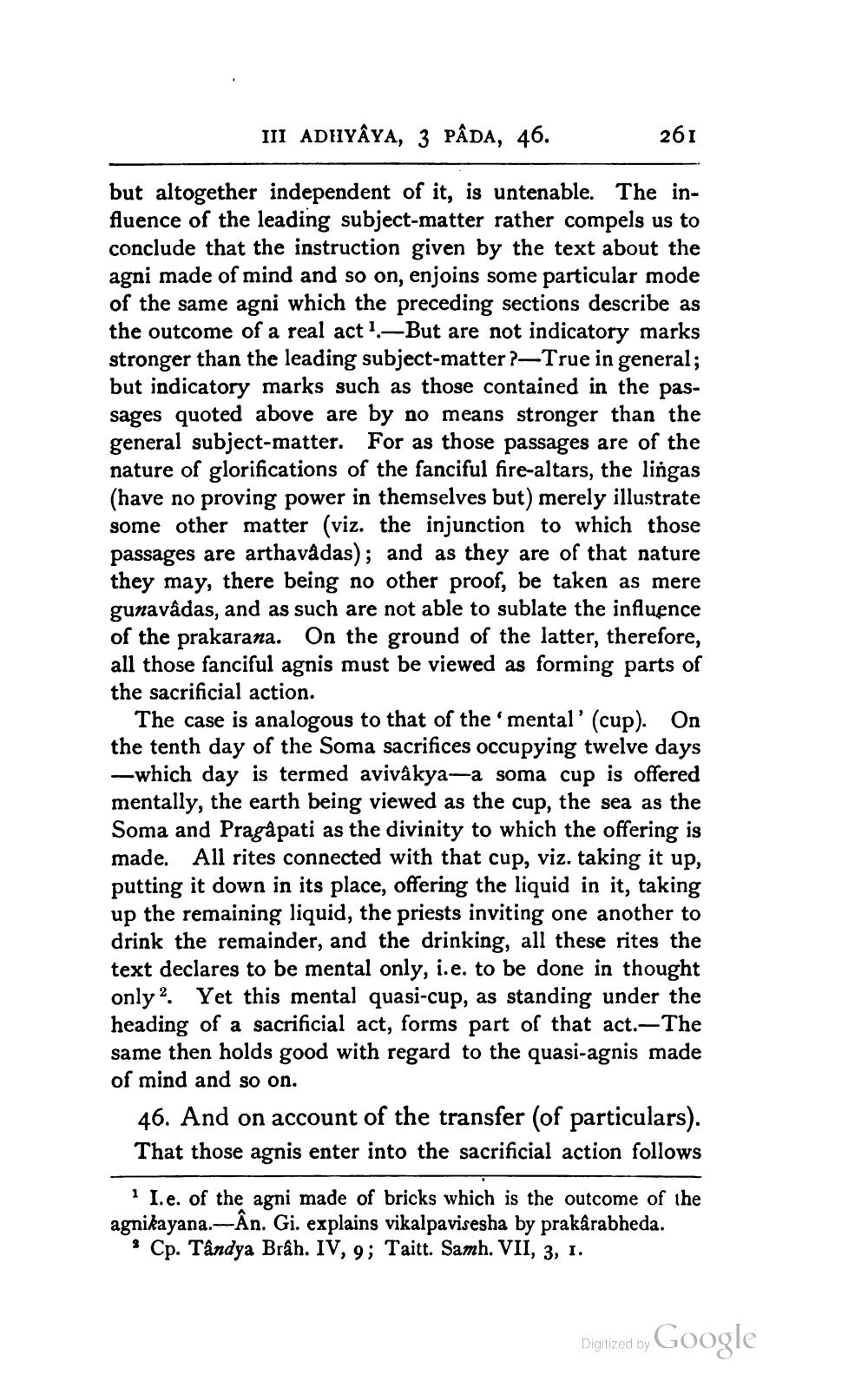________________
III ADHYÂYA, 3 PÂDA, 46.
261
but altogether independent of it, is untenable. The inAuence of the leading subject-matter rather compels us to conclude that the instruction given by the text about the agni made of mind and so on, enjoins some particular mode of the same agni which the preceding sections describe as the outcome of a real act 1.—But are not indicatory marks stronger than the leading subject-matter ?— True in general; but indicatory marks such as those contained in the passages quoted above are by no means stronger than the general subject-matter. For as those passages are of the nature of glorifications of the fanciful fire-altars, the lingas (have no proving power in themselves but) merely illustrate some other matter (viz. the injunction to which those passages are arthavadas); and as they are of that nature they may, there being no other proof, be taken as mere gunavâdas, and as such are not able to sublate the influence of the prakarana. On the ground of the latter, therefore, all those fanciful agnis must be viewed as forming parts of the sacrificial action.
The case is analogous to that of the 'mental' (cup). On the tenth day of the Soma sacrifices occupying twelve days
—which day is termed avivákya-a soma cup is offered mentally, the earth being viewed as the cup, the sea as the Soma and Pragapati as the divinity to which the offering is made. All rites connected with that cup, viz. taking it up, putting it down in its place, offering the liquid in it, taking up the remaining liquid, the priests inviting one another to drink the remainder, and the drinking, all these rites the text declares to be mental only, i.e. to be done in thought only?. Yet this mental quasi-cup, as standing under the heading of a sacrificial act, forms part of that act.— The same then holds good with regard to the quasi-agnis made of mind and so on.
46. And on account of the transfer (of particulars). That those agnis enter into the sacrificial action follows
* I.e. of the agni made of bricks which is the outcome of the agnikayana.-Ân. Gi. explains vikalpavisesha by prakârabheda.
* Cp. Tândya Brâh. IV, 9; Taitt. Samh. VII, 3, 1.
Digitized by
Digilzed by Google




